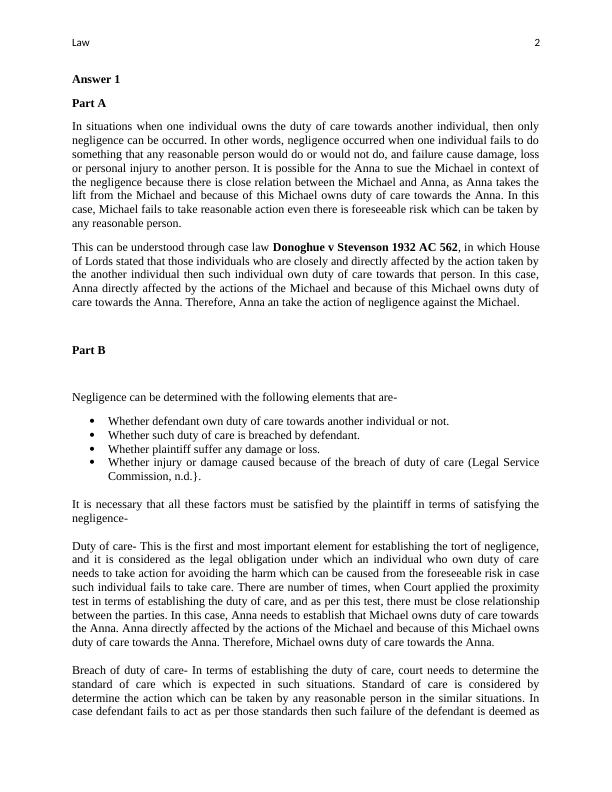Understanding Negligence and Statutory Guarantees under Australian Consumer Law
6 Pages2305 Words498 Views
Added on 2023-06-05
About This Document
This article discusses the concept of negligence and how it can be established in situations where one individual owns the duty of care towards another individual. It also explains the provisions related to acceptable quality and fitness of goods under Australian Consumer Law, including the guarantees provided to consumers by manufacturers and suppliers. The article provides relevant case laws and examples to help readers understand the concepts better.
Understanding Negligence and Statutory Guarantees under Australian Consumer Law
Added on 2023-06-05
ShareRelated Documents
End of preview
Want to access all the pages? Upload your documents or become a member.
Law Assignment: Tort of Negligence
|9
|1722
|538
Commercial law - Sample Assignment
|8
|2696
|171
Issues In Business and Corporation Law
|6
|1021
|100
Business Law: Duty of Care, Lower Duty of Care, and Vicarious Liability
|7
|1906
|228
Impact of An Ethical Framework
|9
|2012
|28
Commercial Law Name of the University Author
|9
|1485
|30



